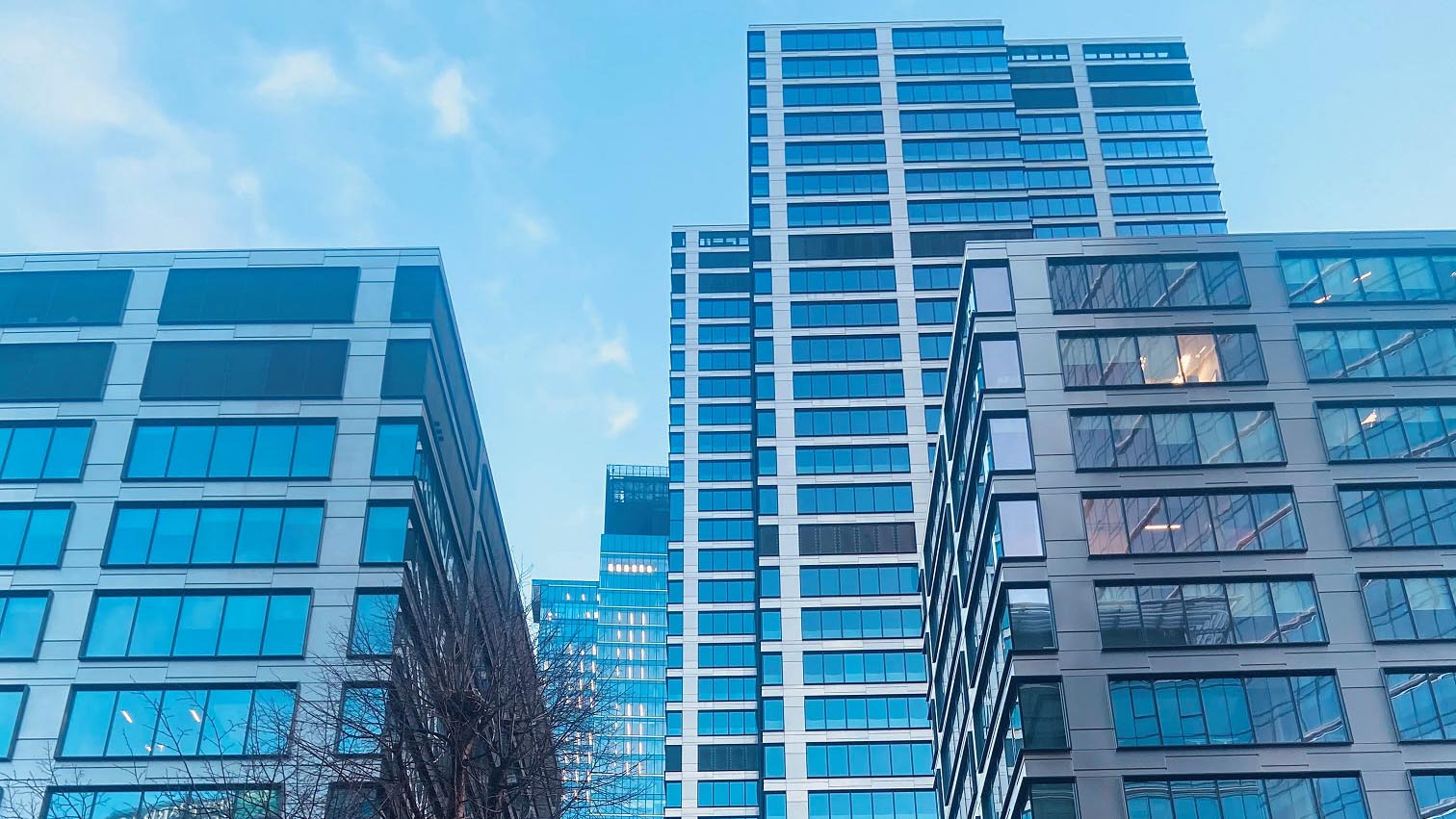In 2023, the demand for offices in Warsaw turned out to be slightly lower than the record-breaking demand of 2022. Approximately 750 thousand sq m. of office space was contracted. Tenant activity has increased significantly compared to 2020 and 2021. Last year, the demand for offices in Warsaw increased quarter by quarter. The last months of 2023 brought the best result, the fourth quarter of the year saw the conclusion of lease agreements for over 250 thousand sq m. of offices. Approximately 170 thousand sq m. of space found tenants in both the third and the second quarter. 160 thousand sq m. of space was leased in the first three months of last year. Offices in the city center were most popular, but district of Sluzewiec also achieved good results.
In the last quarter of 2023, the upward trend in the Warsaw office market was visible not only in terms of demand, but also new supply. In the fourth quarter, over 40 thousand sq m. of new office space was delivered on the Warsaw market, with 60 thousand sq m. of offices commissioned last year. The largest completed projects included Lakeside (22 thousand sq m.), Studio B (16 thousand sq m.), and building B9 in The Park complex (12 thousand sq m.). S-Bridge Office Park II building, Wal Miedzeszynski 628, as well as Giga Rental A and B were also delivered.
Not much is being built
Over 260 thousand sq m. of space is under construction in Warsaw, three times less than in the years of prosperity on the office market. According to the companies’ announcements, about 80 thousand sq m. of currently developed space, is to be completed before the end of 2024. Most of the new offices are being built in the new central business zone of the city surrounding Rondo Daszynskiego, which gathers the most modern office properties.
The Bridge project is still under construction, and is expected to deliver 47 thousand sq m. of office space in the first quarter of 2025. Office House, the first building in Towarowa 22 mixed-use complex, which will offer 31 thousand sq m. of space is also under construction. So is The Form with 28 thousand sq m. of space.
Moreover, among the currently implemented projects there are: last stage of the Lixa complex, which will bring approximately 28 thousand sq m. of offices, Studio A office building with 26 thousand sq m. of space, VIBE office building, which will provide 15 thousand sq m., and Upper One (36 thousand sq m.) is being build on the plot of the demolished Atrium International. The construction of the 130-meter Skyliner II has also started. It will offer 24 thousand sq m. of new offices. Also among the started projects there are the mixed-use Drucianka Campus complex with 42 thousand sq m. of office space and the intimate Vena project with 15 thousand sq m. At the same time, modernization of Saski Crescent and Warta Tower buildings, among others, is underway.
It is clear that the optimism of investors and developers does not fade away, despite significant economic challenges. Among the office projects that are being prepared for construction in Warsaw are Babka 2, Spark A, Chopin Tower, Warsaw One Park, Nowa Emilia, Roma Tower, Sobieski Tower, Warnenczyka, Diamond Business Park I/J, Jutrzenki Business, South Park, Airport Village, Hello, or Poleczki Business Park – Sztokholm.
There is a lack of offices in the center
In order to move the office to the most fashionable and modern business center in Warsaw, located at Rondo Daszynskiego, those interested must wait until the new building is completed. The vacancy rate in this area remains extremely low – 4 per cent. In central zones it amounts to 8.5 per cent, and on average in Warsaw it exceeds 10 per cent. A regular decline in vacancy rates on the Warsaw market has been recorded for many months. The largest number of vacant offices is in Sluzewiec – over 20 per cent.
The shortage of available space resulted in a several per cent increase in average rental rates on the Warsaw market last year. The high cost of fit-out means that many companies decide to renegotiate contracts and extend the lease of the occupied space for subsequent years. The tendency to reduce space is becoming common.
Tenants strive for greater cost efficiency, but it does not translate into interest in cheap offices. Just quite the opposite, they focus on the most modern buildings that provide comfortable working conditions. In the context of changes taking place on the market, there is a greater demand from tenants for intelligent technological solutions in the buildings, enabling more effective use of the office and common areas. Thanks to various types of applications used in the latest office facilities, one can conveniently book parking spaces and conference rooms, choose a desk in a co-working space, or automatically open doors and use elevators without contact. These trends are noticed by the owners of older buildings, which need to be modernized in order to adapt them to the standard expected by tenants.
This year, we expect a further decline in vacancy rates in Warsaw and an increase in rental rates, as well as the growing importance of sustainable development and ESG. These factors are becoming a key element not only in making investment decisions, but also in selecting space by tenants and in effective management of real estate.
Mateusz Strzelecki, Partner and Head of Tenant Representation at Walter Herz
